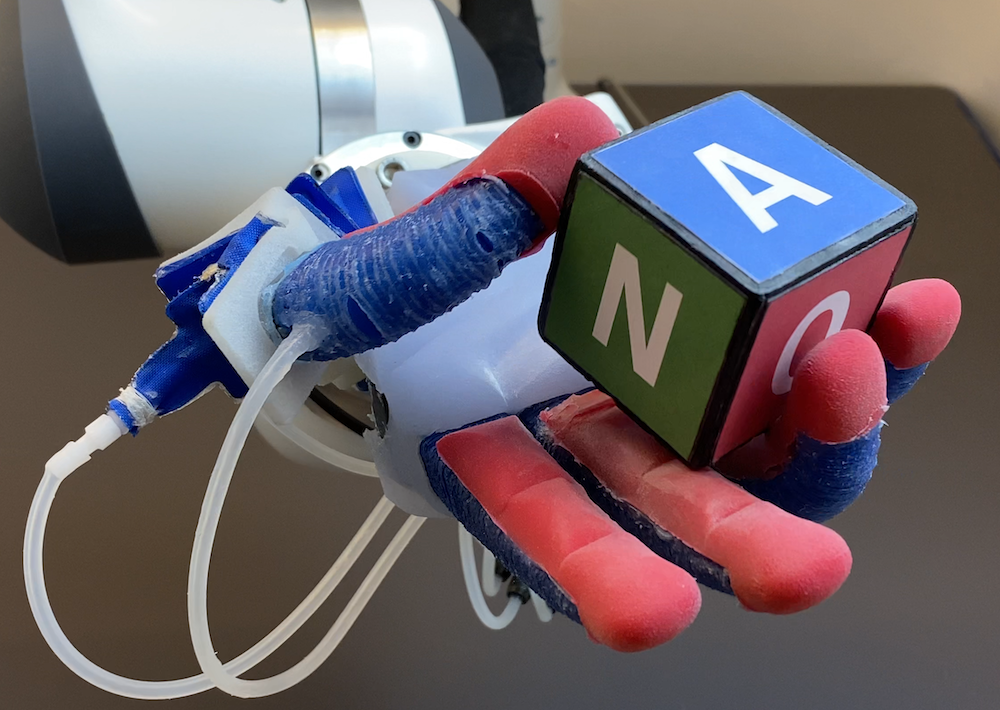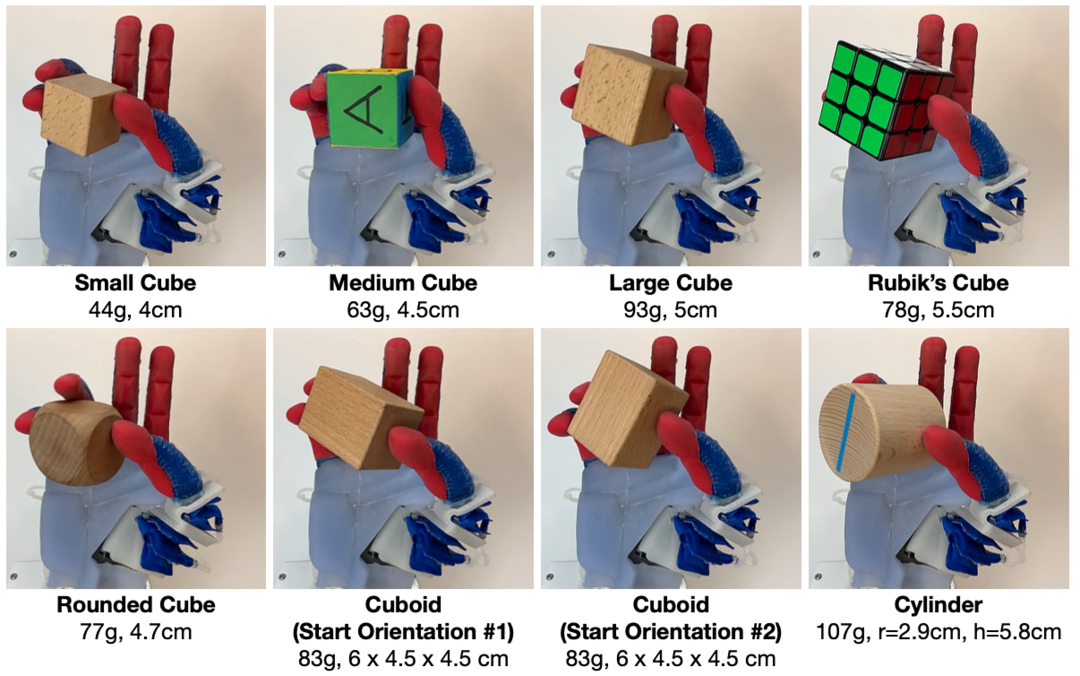In-Hand Manipulation

Unlike most robot grippers, human hands are versatile manipulators: they are soft, compliant, dexterous, and can be used for multiple tasks at once (e.g. lifting a teacup while holding a pencil in the same hand, which requires repositioning of the pencil to free the other fingers for gripping the cup handle).
We want robotic hands to be similarly versatile. The RBO Hand 3 already solves a large part of this problem by mimicking the morphology of a human hand, but planning movements is still a hard problem. Conventional manipulation planners are designed for rigid hands with links, and they employ analytic models of the hand and a previously known object. Such models cease to be useful in our case, because it is hard to precisely model a system with a soft hand and a complex unknown object.
With these constraints in place, how can our soft robotic hands be made to grasp a pencil and move it between different fingers, or spin a cube to an arbitrary face?
To tackle this problem, we aim to develop controllers that exploit the compliance of the hand in contact scenarios. This requires an understanding of the morphological computation (MC) the hand is performing in manipulation tasks. Given a measure for MC, we want to find control-sequences that exploit the beneficial MC of the hand. By beneficial, we refer to MC that supports/facilitates in-hand manipulation. Bringing together the computation performed by the hand and the computation performed by a controller, we hope to discover "funnels" for in-hand manipulation that represent robust, repeatable and sequencable manipulation skills.
This effort will include investigations of different feature encodings, sample-efficient learning algorithms, appropriate simulation environments and various kinds of hand sensorization.
In-Hand Manipulation with the RBO Hand 3

Contact
Aditya Bhatt, Adrian Sieler
Project description
We present in-hand manipulation skills on a dexterous, compliant, anthropomorphic hand. Even though these skills were derived in a simplistic manner, they exhibit surprising robustness to variations in shape, size, weight, and placement of the manipulated object. The are also very insensitive in variation of execution speeds, ranging from highly dynamic to quasi-static. The robustness of the skills leads to compositional properties that enable extended and robust manipulation programs. To explain the surprising robustness of the in-hand manipulation skills, we performed a detailed, empirical analysis of the skills’ performance. From this analysis, we derive three principles that we believe to be an important foundation for robust robotic in-hand manipulation, and possibly for manipulation in general.
Funding
- Deutsche Forschungsgemeinschaft (DFG, German Research Foundation) under Germany's Excellence Strategy - EXC 2002/1 "Science of Intelligence" - project number 390523135 - Dexterous and Sensorized Soft Robotic Hands, May 2019 - April 2022
- Deutsche Forschungsgemeinschaft (DFG, German Research Foundation) Priority Programme SPP 2100: Soft Material Robotic System - project number: 405033880
- Deutsche Forschungsgemeinschaft (DFG, German Research Foundation) - Robotics-Specific Machine Learning (R-ML) - project number 3294260
- SoMa - Soft Manipulation, Horizon 2020 project funded by the European Commission. May 2015 - April 2019.
- Alexander von Humboldt professorship - awarded by the Alexander von Humboldt foundation and funded through the Ministry of Education and Research, BMBF, July 2009 - June 2015
Publications
2021
Surprisingly Robust In-Hand Manipulation: An Empirical Study
Proceedings of Robotics: Science and Systems
Herausgeber: Virtual
Juli 2021

